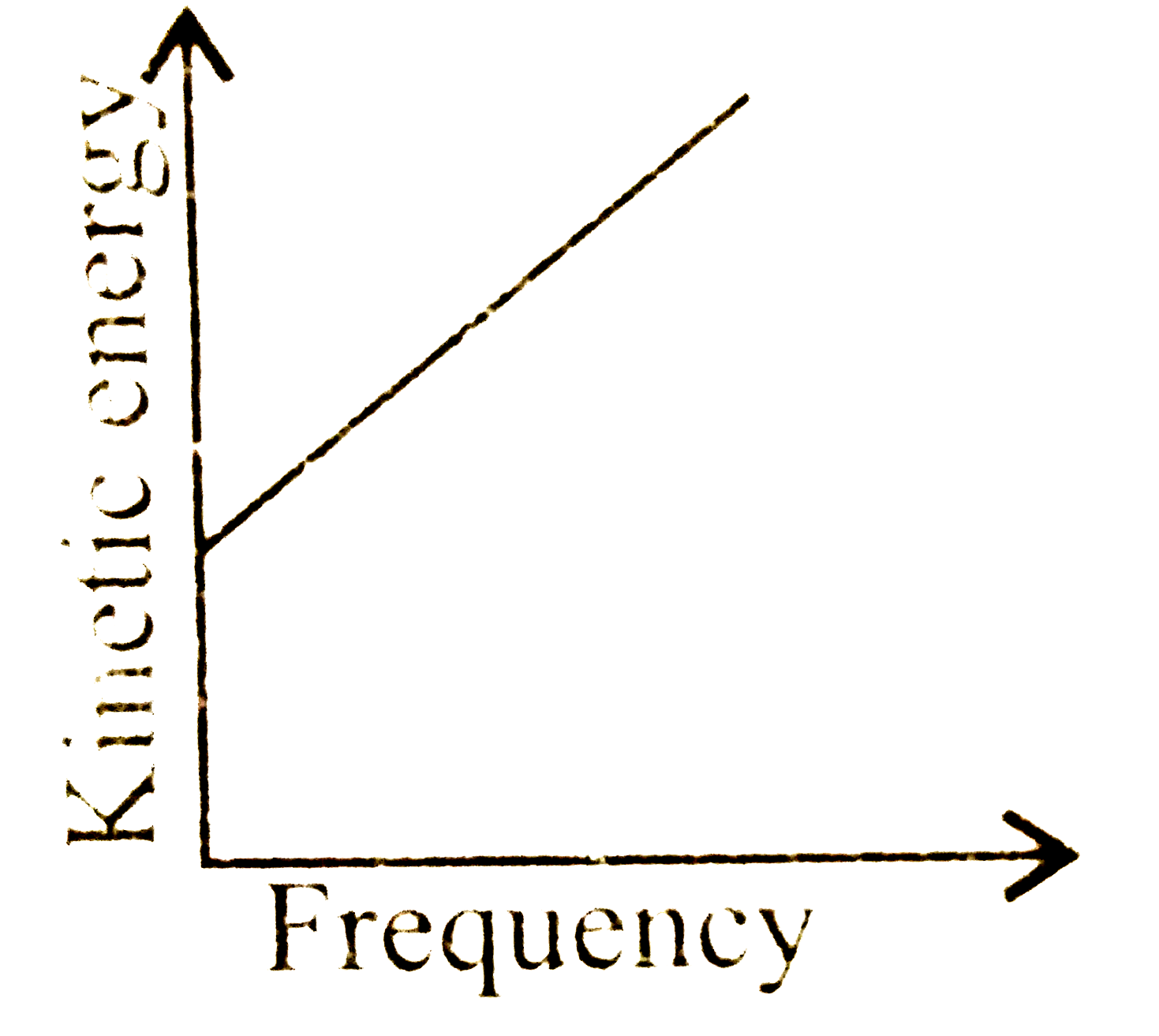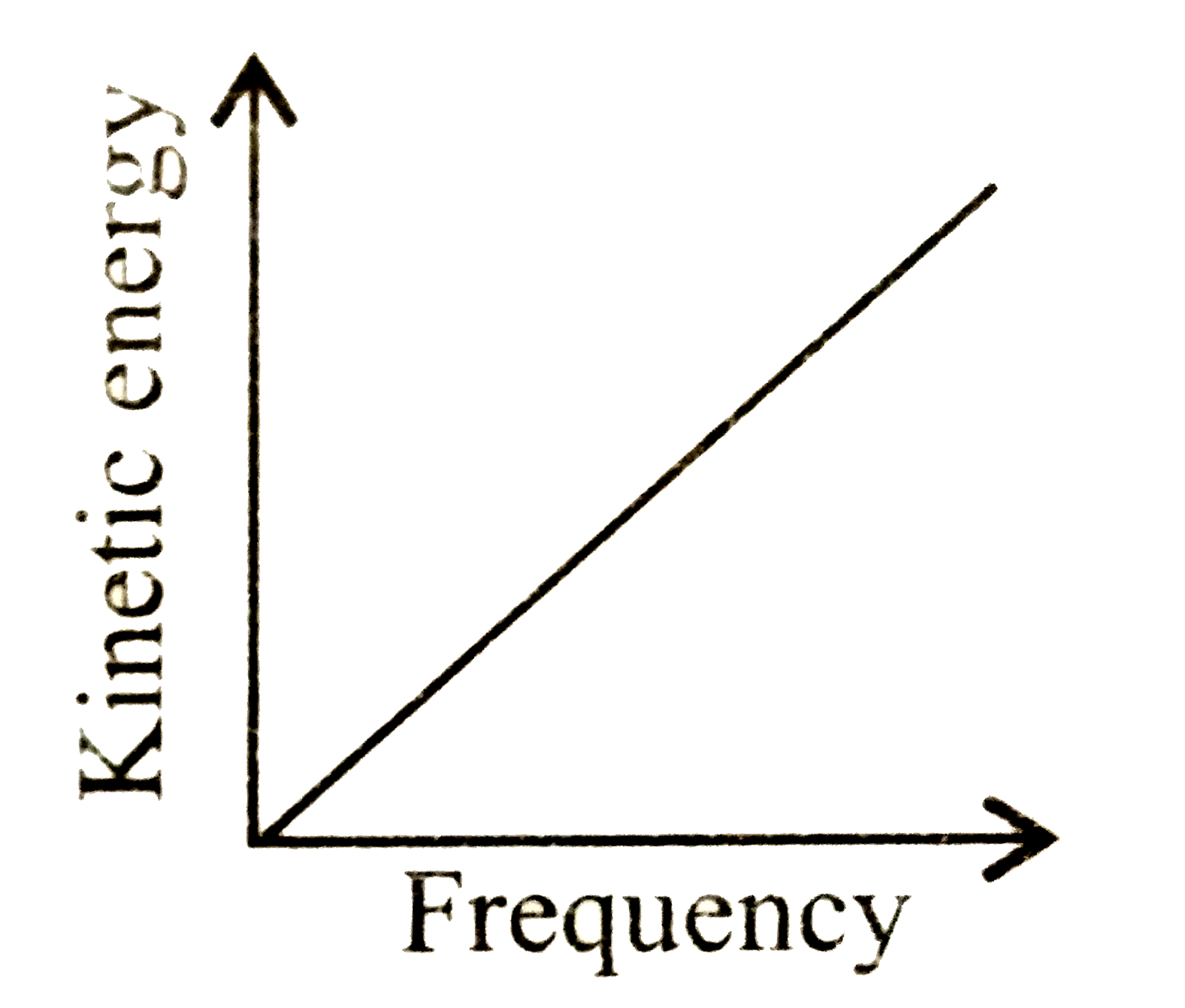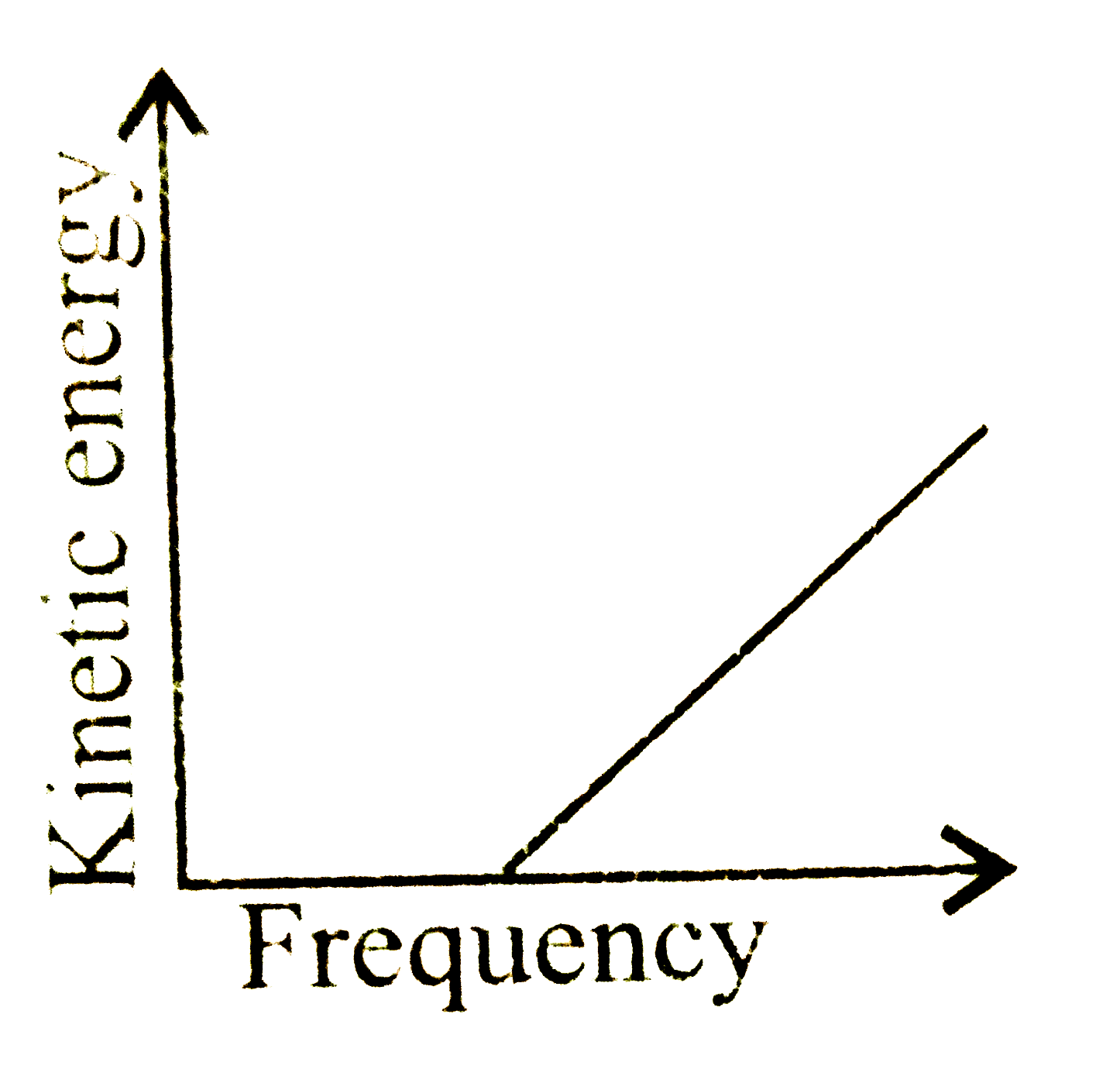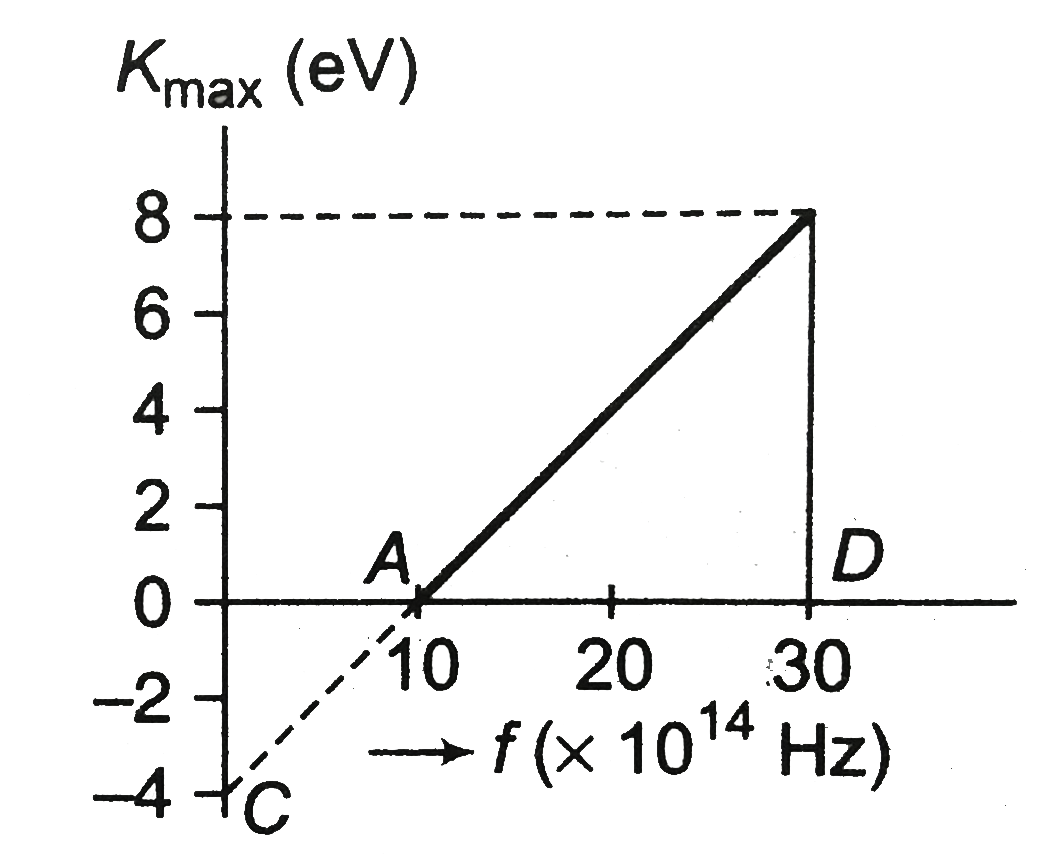According to Einstein's photoelectric equation , the graph between the kinetic energy of photoelectrons ejected and the frequency of incident radiation is




The correct Answer is:D
To solve the question regarding the graph between the kinetic energy of photoelectrons ejected and the frequency of incident radiation according to Einstein's photoelectric equation, we can follow these steps:
Step 1: Understand Einstein's Photoelectric Equation
Einstein's photoelectric equation is given by:
KE=hν−ϕ
where:
- KE is the kinetic energy of the ejected photoelectrons,
- h is Planck's constant,
- ν is the frequency of the incident radiation,
- ϕ (or hν0) is the work function of the material.
Step 2: Rearranging the Equation
From the equation, we can express the kinetic energy in terms of frequency:
KE=hν−ϕ
This indicates that the kinetic energy of the photoelectrons increases linearly with the frequency of the incident radiation.
Step 3: Identify the Graph Characteristics
In the equation KE=hν−ϕ:
- The slope m of the graph (when plotted as KE vs. ν) is equal to Planck's constant h.
- The y-intercept (when ν=0) is −ϕ, which means that the graph will intercept the y-axis at a negative value.
Step 4: Plot the Graph
1. On the x-axis, plot the frequency ν.
2. On the y-axis, plot the kinetic energy KE.
3. The graph will start below the origin (at −ϕ) and will rise linearly as frequency increases.
Step 5: Conclusion
The resulting graph is a straight line with a positive slope that intersects the y-axis at a negative value. This indicates that for frequencies below a certain threshold (where ν<ν0), no photoelectrons are emitted, and thus the kinetic energy is negative or zero.
Final Answer
The graph between the kinetic energy of photoelectrons ejected and the frequency of the incident radiation is a straight line with a positive slope, intersecting the y-axis at a negative value.
---
Einstein's photoelectric equation is given by:
KE=hν−ϕ
where:
- KE is the kinetic energy of the ejected photoelectrons,
- h is Planck's constant,
- ν is the frequency of the incident radiation,
- ϕ (or hν0) is the work function of the material.
From the equation, we can express the kinetic energy in terms of frequency:
KE=hν−ϕ
This indicates that the kinetic energy of the photoelectrons increases linearly with the frequency of the incident radiation.
In the equation KE=hν−ϕ:
- The slope m of the graph (when plotted as KE vs. ν) is equal to Planck's constant h.
- The y-intercept (when ν=0) is −ϕ, which means that the graph will intercept the y-axis at a negative value.
1. On the x-axis, plot the frequency ν.
2. On the y-axis, plot the kinetic energy KE.
3. The graph will start below the origin (at −ϕ) and will rise linearly as frequency increases.
The resulting graph is a straight line with a positive slope that intersects the y-axis at a negative value. This indicates that for frequencies below a certain threshold (where ν<ν0), no photoelectrons are emitted, and thus the kinetic energy is negative or zero.
The graph between the kinetic energy of photoelectrons ejected and the frequency of the incident radiation is a straight line with a positive slope, intersecting the y-axis at a negative value.
Topper's Solved these Questions
- DUAL NATURE OF RADIATION AND MATTER BOOK - NCERT FINGERTPS ENGLISHCHAPTER - DUAL NATURE OF RADIATION AND MATTER EXERCISE - PARTICLE NATURE OF LIGHT : THE PHOTON
19 Videos
- DUAL NATURE OF RADIATION AND MATTER BOOK - NCERT FINGERTPS ENGLISHCHAPTER - DUAL NATURE OF RADIATION AND MATTER EXERCISE - WAVE NATURE OF MATTER
37 Videos
- DUAL NATURE OF RADIATION AND MATTER BOOK - NCERT FINGERTPS ENGLISHCHAPTER - DUAL NATURE OF RADIATION AND MATTER EXERCISE - EXPERIMENTAL STUDY OF PHOTOELECTRIC EFFECT
11 Videos
- CURRENT ELECTRICITYBOOK - NCERT FINGERTPS ENGLISHCHAPTER - CURRENT ELECTRICITYEXERCISE - Assertion And Reason
15 Videos
- ELECTRIC CHARGES AND FIELDSBOOK - NCERT FINGERTPS ENGLISHCHAPTER - ELECTRIC CHARGES AND FIELDSEXERCISE - Assertion And Reason
15 Videos
Similar Questions
Knowledge Check
According to Einstein's photoelectric equation, the plot of the maximum kinetic energy of the emitted photoelectrons from a metal versus frequency of the incident radiation gives a straight line whose slope
Adepends on the intensity of incident radiation.Bdepends on the nature of the metal and also on the intensity of incident radiation.Cis same for all metals and independent of the intensity of the incident radiation.Ddepends on the nature of the metal.
The kinetic energy of the photoelectrons depends upon the
View SolutionKinetic energy of photoelectrons is independent on-------- of incident radiation.
View SolutionAccording to Einstein's photoelectric equation (symbols have their usual meaning)
View SolutionMaximum kinetic energy (Ek) of a photoelectron varies with the frequency (v) of the incident radiation as
View SolutionThe maximum kinetic energy of the photoelectrons veries
View SolutionA graph regarding photoelectric effect is shown between the maximum kinetic energy of electrons and the frequency of the incident light. On the basis of data as shown in the graph, calculate (a) threshold frequency , (b) work- function, (c ) planck constant

View SolutionThe correct graph respectivley the relation between energy (E) of photoelectrons and frequency v of incident light is
View Solution
